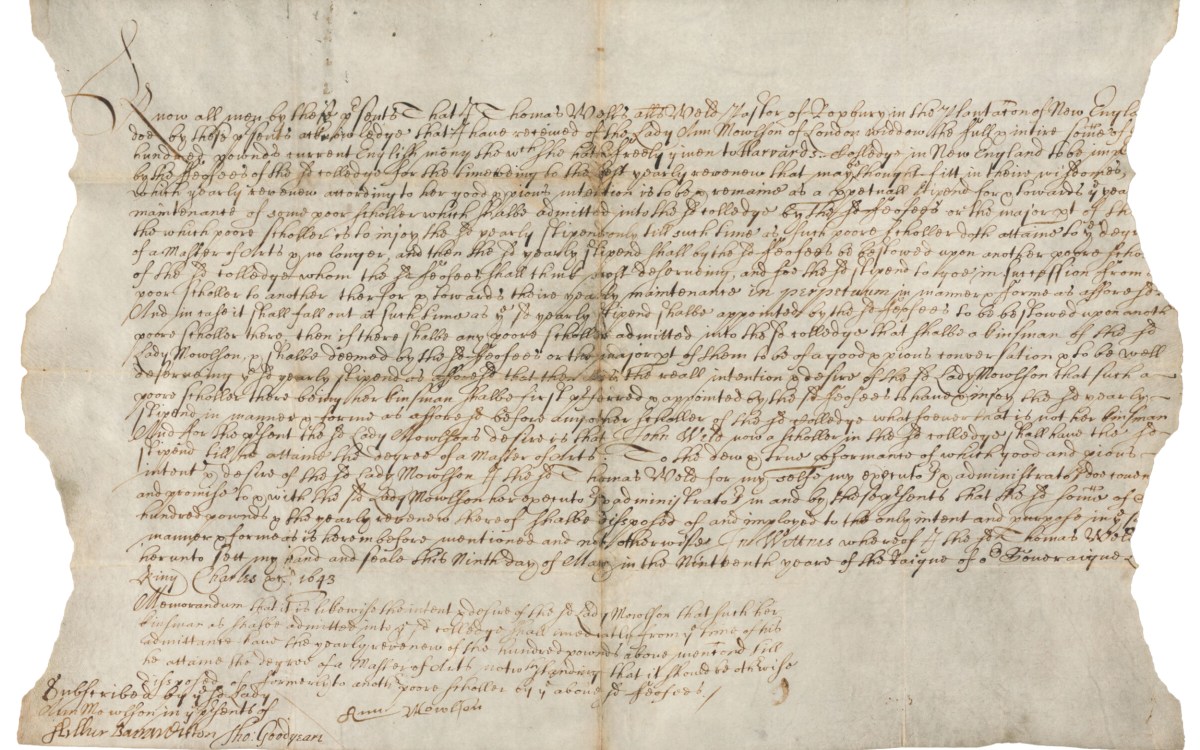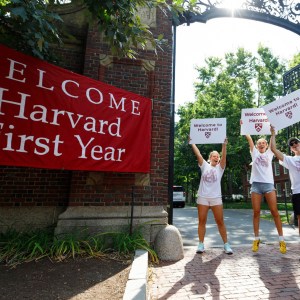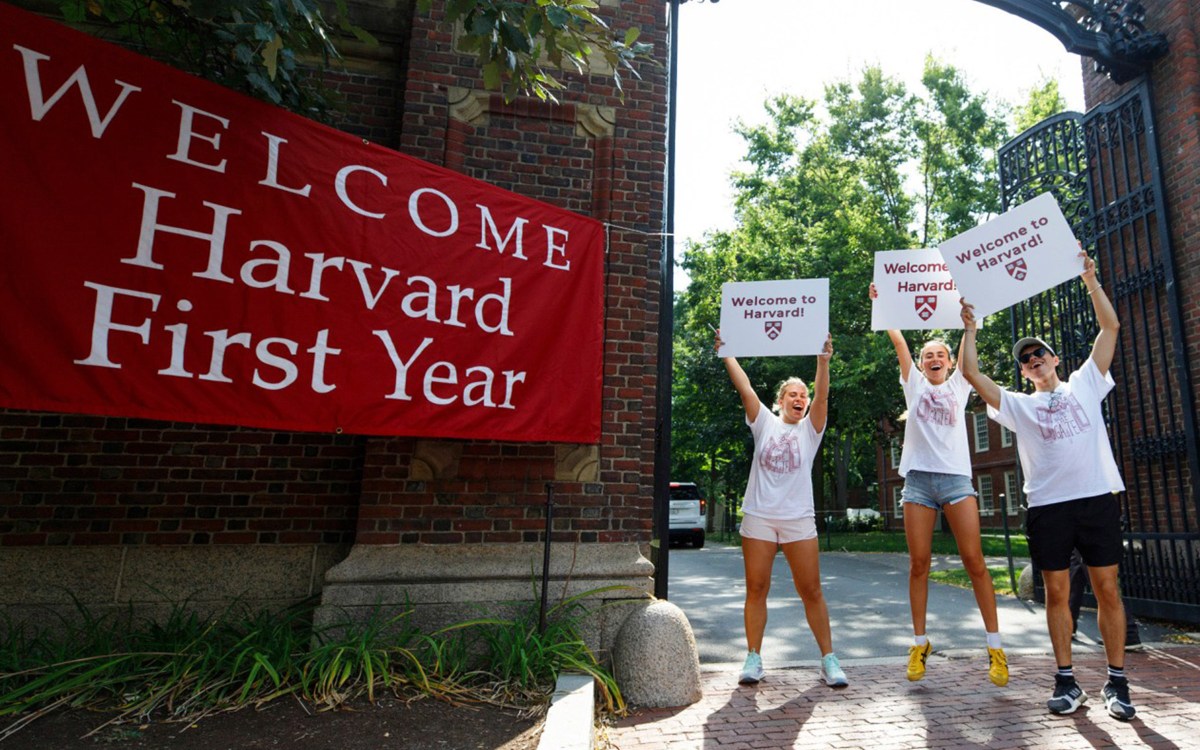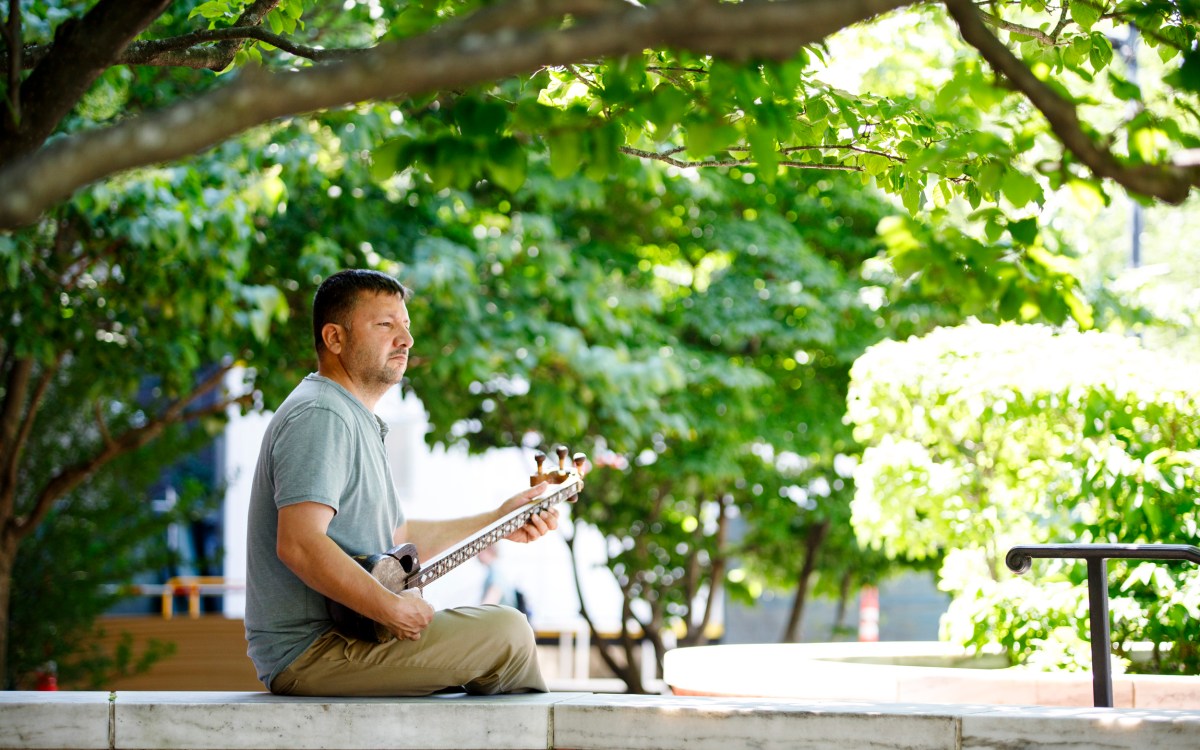After 78 years at Harvard, Danilov Bells will return to Russia
After 78 years of refuge at Harvard University, iconic Russian bells saved from Stalinist efforts to eradicate religious artifacts will return permanently this summer to their one-time home, the Danilov Monastery in Moscow.
The Danilov Bells — known on the Harvard campus as the Lowell House Bells, after the residential building in whose tower they have hung since 1930 — will be replaced by a set of 17 new bells cast by a Russian foundry under terms agreed to by Harvard and the Russian Orthodox Church.
Removal of the Danilov Bells from Lowell House will start in late June, and installation of replacement bells will begin in mid-July.
“Over the years, students developed many styles of ringing the bells, and the ears of generations of Harvard students have become accustomed to their distinctive sound,” says Diana L. Eck, master of Lowell House and professor of comparative religion and Indian studies at Harvard. “Indeed, no great Harvard ceremony is complete without them.”
In addition to ringing at joyous occasions like Harvard’s annual commencement exercises, the bells have tolled over the years to mark somber events such as the 1968 assassination of Martin Luther King Jr. and the terrorist attacks of Sept. 11, 2001.
For many years, earplug-wearing and weather-braving “klappermeisters” from a student group called the Lowell House Society of Russian Bell Ringers have made a Harvard tradition of playing the bells at 1 p.m. on Sunday afternoons, as well as passing on lore and bell-ringing skill from generation to generation of students.
As the project to return the bells brought a new era of cultural relations between Lowell House and the Danilov Monastery, Harvard bell ringers traveled to Russia to train, and Russian bell experts held master classes in bell ringing at Lowell House.
“Today our team of bell ringers produces a rich, layered sound that is more beautiful than ever,” Eck says. “We have grown to love these old bells, but we are happy to see them return to their Russian home, and look forward to welcoming their replacements.”
Eck and Lowell House co-master Dorothy Austin attended a ceremony in Moscow last July where Russian Orthodox Patriarch Alexey II dedicated the new bells and blessed them on their way to Harvard.
On June 1-2, Lowell House will host a bell-ringing festival and symposium celebrating the Danilov Bells and their history at Harvard. The monastery’s father superior, three senior bell ringers, and a 12-member choir will represent the Danilov Monastery. The bells, venerated by many Russians, will be feted upon their return to Moscow in September.
In danger of destruction by Stalinists, the Danilov Bells were purchased in 1929 and removed from the Soviet Union by American diplomat, philanthropist, and businessman Charles R. Crane, who donated them to Harvard in 1930. The tower of Lowell House, then under construction as a clock tower, was redesigned to receive the bells. All but one of the 18 originals have resided in Lowell House ever since; the last, placed in the tower of Baker Library at the Harvard Business School, returned to Russia last year.
Totaling some 25 tons, the Danilov Bells range in weight from 22 pounds to 26,700 pounds. The most massive, called the Mother Earth Bell, is nearly 9 feet in diameter and is rung from within by swinging an 800-pound clapper. Most of the bells were cast in the 19th century, but the oldest is believed to date to around 1690.
The larger bells are inscribed in Old Church Slavonic. The sides and shoulders of the bells bear icons of Christ, saints, and Mary, along with winged angels, medallions, and scrolls of floral decoration. The smaller bells are unadorned.
While recognizing that the bells legally belong to Harvard, the more than 700-year-old Danilov Monastery, now the headquarters of the Russian Orthodox Church, has made formal and informal requests for their return over the past 20 years. An agreement between Harvard and the church, reached in December 2003, stipulated that the Danilov Bells would be relinquished by the University in exchange for a set of replacement bells. The Link of Times Foundation, dedicated to the restoration of Russian arts and culture, has financed the replacement bells.
Cast at the Vera Foundry in Voronezh, Russia, the replacement bells arrived last year on American soil, and are now in a South Boston warehouse, awaiting installation.
“After touring several Russian foundries, we chose one that could very precisely and reliably reproduce the largest, most challenging bells,” says Peter Riley, director for project management in Harvard Real Estate Services, who has been intimately involved in the casting of new bells for Lowell House. “The larger bells in the new set have the character, complexity, and resonance of the larger Danilov Bells, and will evoke strong memories of those bells.”
The Danilov Bells will ring for the last time in Cambridge at Harvard’s June 5 Commencement. Four days later, erection of scaffolding around the Lowell House tower will begin. Later in June, an arcade some 111 feet up the northern façade of the Lowell Tower, facing Mt. Auburn Street, will be cut away to allow access to the bells.
In July, after removal of the Danilov Bells and before installation of the new bells, the current bell carriage of heavy timbers will be removed and replaced with a new steel support structure inside the tower. On the advice of Russian campanologists, the replacement bells will be rearranged for easier access, operability, and improved sound.
While the Lowell House tower is encased in scaffolding, Harvard will fully restore the 214-foot structure, repairing cracked brick at the tower’s base and renewing the wooden structure above that. The tower’s blue dome will be repainted in a darker hue identified from paint analysis and believed to more accurately reflect its original 1930 color, and the 12-foot weathervane atop the tower, among other gilded architectural elements, will be repainted with gold leaf. New architectural lighting will illuminate the tower and pediments at night.
All construction is expected to conclude by the end of August. The contractor on both the tower restoration and the bell removal and installation is Consigli Construction of Milford, Mass. Finegold Alexander + Associates of Boston are project architects.
Upcoming Lowell House-Danilov Monastery Bell Festival and Symposium Celebrating 77 years of Russian bells at Lowell House and the return of the bells this summer
Sunday (June 1)
Noon The Bells of Lowell
Welcome and Bell Ringing Concert
Lowell House Dining Hall and Courtyard
2-6 p.m. The Danilov Monastery and Harvard
The History of the Monastery and Its Great Bells, The Spirit of Russian Bell Ringing, and The Rescue of the Bells by Charles R. Crane Barker Center, Thompson Room, 12 Quincy St.
8 p.m. Russian Choral Music and Bell Ringing
Bellringers from the Kremlin Belltower, Danilov Monastery, and Lowell House; The Choir of the Danilov Monastery
Lowell House Dining Hall and Courtyard
Monday (June 2)
9 a.m. The Russian Bells at Harvard
History of the Bells at Harvard, The Project to Return the Bells Barker Center, Thompson Room
11 a.m. The Renaissance of Russian Bells
History of Bells Through Ivan the Great Belltower, Harvard Visits the Foundries of Russia, New Era of Russian Bell-Casting
Barker Center, Thompson Room
2:30 p.m. The Arts of Bell Ringing
Lowell House Dining Hall
4 p.m. Bell Ringing Concert
Lowell House Courtyard
8 p.m. Russian Choral Concert
The Choir of the Danilov Monastery
Lowell House Dining Hall
Open to the community. Registration suggested. Register online at http://lowell.harvard.edu/.




